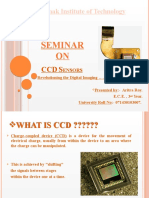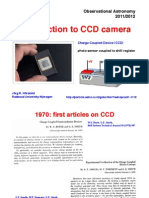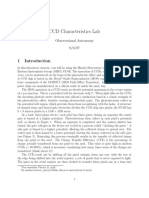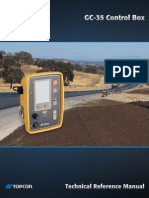0% found this document useful (0 votes)
31 views13 pagesImage Sensors
The document discusses image sensors used in astronomy, focusing on CCD and CMOS technologies, their structures, working principles, and performance evaluations. It also compares CCD and CMOS sensors, highlighting their differences in power consumption, image quality, and applications. Additionally, the document covers the concept of flux and the magnitude scale in optical astronomy, explaining how brightness is measured and compared among celestial objects.
Uploaded by
starlink9751Copyright
© © All Rights Reserved
We take content rights seriously. If you suspect this is your content, claim it here.
Available Formats
Download as PDF, TXT or read online on Scribd
0% found this document useful (0 votes)
31 views13 pagesImage Sensors
The document discusses image sensors used in astronomy, focusing on CCD and CMOS technologies, their structures, working principles, and performance evaluations. It also compares CCD and CMOS sensors, highlighting their differences in power consumption, image quality, and applications. Additionally, the document covers the concept of flux and the magnitude scale in optical astronomy, explaining how brightness is measured and compared among celestial objects.
Uploaded by
starlink9751Copyright
© © All Rights Reserved
We take content rights seriously. If you suspect this is your content, claim it here.
Available Formats
Download as PDF, TXT or read online on Scribd
/ 13


















































































